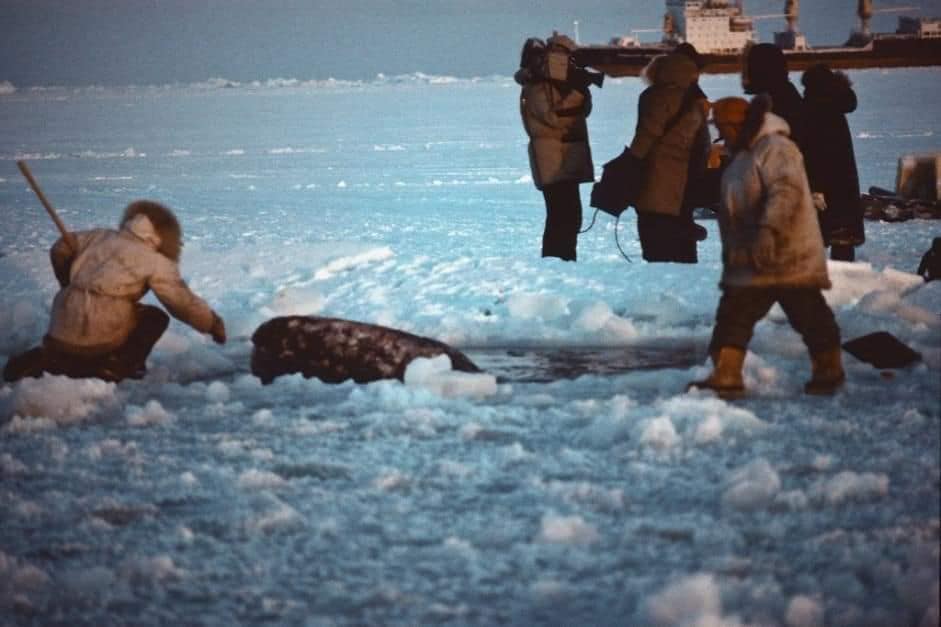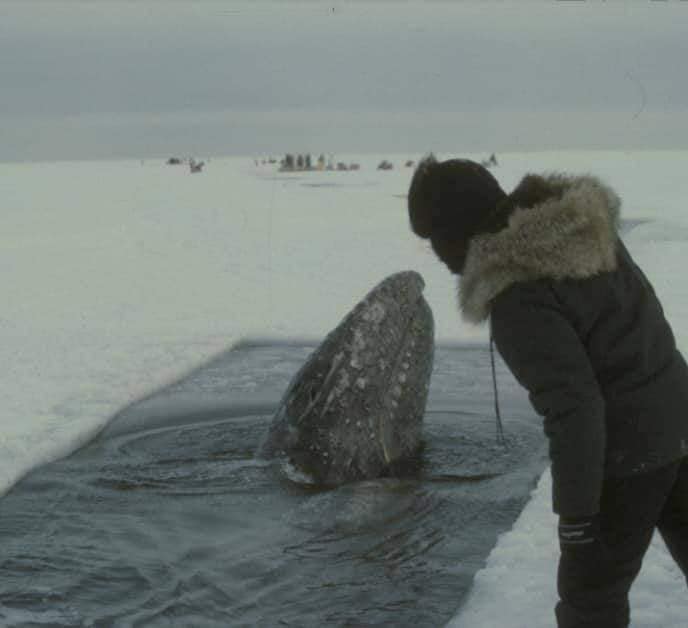Operation Breakthrough: When the USA and the Soviet Union Teamed Up to Save Whales

On the 7th of October 1988, an Inupiaq hunter spotted three whales trapped by pack ice in Alaska. He immediately called for help and soon, hunters from the local communities were working together to try and keep the whales alive. The US National Oceanic and Atmospheric Administration and The US National Marine Fisheries Service were soon involved. They requested the help of the US Department of Defence.
The whales were now trapped 8km inland. A channel 8km long had to be cut through the ice so the whales could make it back to the open sea. A Sikorsky S64 Skycrane carrying a hydraulic hammer to fracture the ice and a C-130 carrying heavy-duty chainsaws arrived on site and work got underway: Teams of Inupiaq hunters, government workers, and Greenpeace volunteers cut the ice while pumps and de-icers were used to circulate the water and prevent it from freezing over again.
Challenges and Cooperation

Time was of the essence as all three whales showed signs of distress, especially the baby one. Work progressed slowly. Too slowly. And while the ice was 1 foot thick near the whales, it went on to become thicker with an ice ridge several meters thick laying between them and freedom.
The USA had nothing that could go through that, and using explosives so close to the whales was deemed too dangerous. The US DoD contacted the State Department, which in turn contacted the Soviet Government for help. The Ministry of Defence of the Soviet Union immediately contacted the Hydrometeorology and Control of the Natural Environment and head of the Arctic and Antarctic Operations for the U.S.S.R.

Rescue Mission by Soviet Ice Breakers
The Soviet Union agreed to send in two nuclear-powered ice breakers without delay: the Vladimir Arseniev and the Admiral Makarov! And the US State Department had agreed to allow them to sail through US territorial waters.
Unfortunately, by then (October 21st) the baby whale had stopped surfacing for air and was presumed dead. The two adult whales were getting increasingly weak. They were also bleeding as they cut themselves on the ice when surfacing for air.
Breakthrough and Aftermath

On the 28th of October, Admiral Makarov broke through the ice ridge, with Vladimir Arseniev clearing up the ice rubble. The channel was open, and the whales were free!
The whales were never seen again. It is likely they survived, but it is also possible they succumbed shortly after having been freed as they were very weak by that stage. Nevertheless, this episode showed that both Cold War foes could show humanity and quickly cut through red tape and cooperate for good causes. 1988 was also a turning point for whale conservation work.

-RBM.










